Data analytics software helps businesses to analyze and visualize data, extract insights, and identify trends within large datasets.
Data analytics software offers benefits such as real-time data for decision-making, customer behavior insights, time-saving automation, identification of inefficiency, and early detection of risks and fraud.
Geekflare has researched and compiled the best data analytics software solutions based on features such as integration options, data visualization capabilities, scalability, real-time analytics, user interface, and pricing.
- 1. Tableau – Best Overall
- 2. MATLAB – Best for Scientific and Engineering Computing
- 3. Looker – Best for Collaborative Business Intelligence
- 4. Adverity – Powerful Analytics Tools for Marketing Teams
- 5. Domo – Best for Cloud-Based Business Intelligence and Analytics
- 6. Minitab – Best for Statistical Analysis and Quality Control
- 7. Google Analytics – Best for Web Analytics and Website Performance Tracking
- 8. BigQuery – Best for Data Warehousing and Big Data Analytics
- 9. Qlik – Best for Data Discovery and Self-Service Analytics
- 10. Sisense – Best for Embedded Analytics
- 11. Zoho Analytics – Best for Small Business Analytics and Reporting
- 12. Apache Iceberg – Best for Data Lake Management
- 13. SAP Analytics Cloud – Best for Enterprise-Level Business Intelligence
- 14. Klipfolio – Best for Real-Time Dashboard Creation and Monitoring
- 15. RIB BI+ – Best for Data Visualization and Exploration
- 16. Microsoft Power BI – Best for Data Visualization and BI
- Show less
You can trust Geekflare
Imagine the satisfaction of finding just what you needed. We understand that feeling, too, so we go to great lengths to evaluate freemium, subscribe to the premium plan if required, have a cup of coffee, and test the products to provide unbiased reviews! While we may earn affiliate commissions, our primary focus remains steadfast: delivering unbiased editorial insights, and in-depth reviews. See how we test.
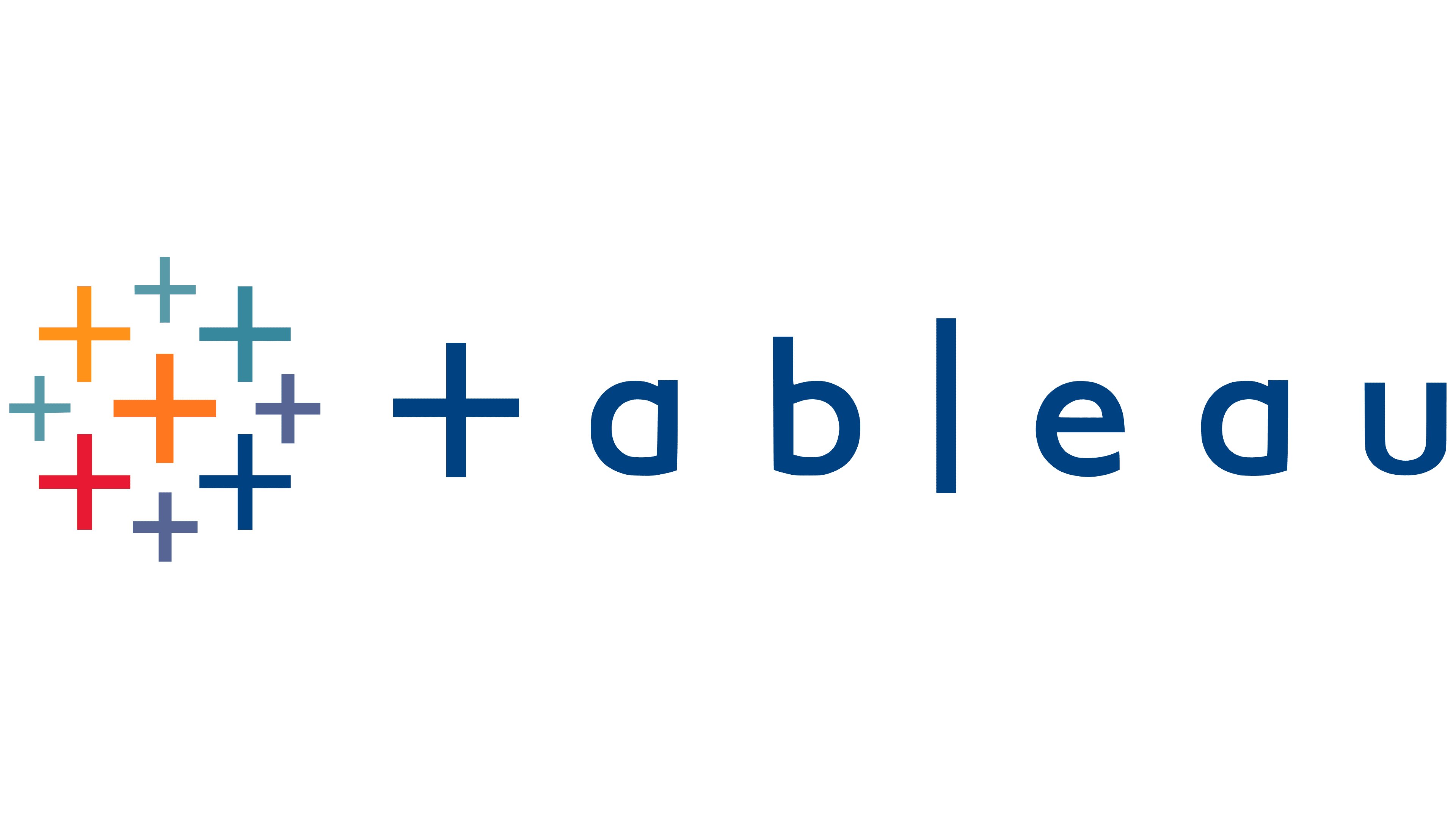
Tableau
Best Overall
- Integrations100+
- AI-PoweredYes
About Tableau
Tableau is a business intelligence (BI) and analytics platform that helps analyze business data and find meaningful insights. It can connect data from multiple sources such as SQL databases, spreadsheets, or cloud-hosted applications such as Google Analytics and Salesforce with Tableau into one dataset.
Tableau live visual analytics and interactive dashboards let people dig into datasets to find answers, while interactive maps allow users to analyze data across multiple regions, territories, or demographics.
Suitable for various industries such as banking, healthcare, and technology. Tableau can be deployed on-premises or as a SaaS application. It supports creating narrative stories with interactive visualizations, which can be easily shared.
Tableau Mobile app allows users to access and analyze data on Android and iOS devices to access insights easily.
Tableau Features
Offers real-time data analysis, allowing users to connect to live data sources and make decisions instantly.
Provides advanced analytics with drag-and-drop functionalities, including trend analyses, forecasting, and statistical summaries.
Supports integration with various data sources, such as databases, spreadsheets, cloud services, and big data platforms, offering over 100 native data connectors.
Tableau Pros/Cons
Offers user-friendly drag-and-drop interface.
Allows users to view and analyze data on their Android and iOS devices.
Facilitate the transfer of complete data tables from Python, R, and Einstein Discovery to Tableau.
The steeper learning curve for beginners
Initial setup and data preparation can be time-consuming.

MATLAB
Best for Scientific and Engineering Computing
- Integrations50+
- AI-PoweredYes
About MATLAB
MATLAB is a powerful programming and numeric computing platform used by millions of engineers and scientists. It helps analyze data, develop algorithms, and create models by combining a user-friendly desktop environment with a programming language focused on matrix and array mathematics.
MATLAB includes the Live Editor for creating scripts that integrate code, output, and formatted text, streamlining the workflow from exploration to implementation.
MATLAB’s extensive toolboxes are professionally developed and fully documented, providing reliable and easy-to-use functions for various applications. Its interactive apps let users visualize data and iterate on analyses, automatically generating MATLAB programs for reproducibility. With the ability to scale computations to clusters, GPUs, and clouds with minimal code changes,
MATLAB Features
Designed for engineering and scientific data, including tabular, time-series, categorical, and text data.
Includes a broad spectrum of statistical functions and tools for hypothesis testing, regression analysis, and multivariate analysis, facilitating in-depth statistical insights.
Facilitates interactive data cleaning, preparation, and code generation within the Live Editor environment.
MATLAB Pros/Cons
Extensive library of built-in functions and toolboxes.
Easy-to-use interface and interactive environment.
Rich visualization capabilities for data analysis.
Requires a basic understanding of programming
The steep learning curve for beginners

Looker
Best for Collaborative Business Intelligence
- Integrations50+
- AI-PoweredYes
About Looker
Looker organizes business information for your business data, making building insight-powered workflows and applications easy.
Looker allows businesses to access, analyze, and act on up-to-date, trusted versions of their data, delivering trusted data experiences at scale from the cloud of your choice. By providing more insights to more users, Looker improves productivity, decision-making, and innovation.
LookML is a powerful SQL-based modeling language that allows analysts to centrally define and manage business rules and definitions, creating efficient SQL queries. The integration between Looker and Looker Studio combines a governed data layer with a self-serve solution for comprehensive data analysis and visualization.
Customers like Major League Baseball and Wix have leveraged Looker to enhance their data capabilities, resulting in faster insights and improved decision-making.
Looker Features
Allows analysts to manage business rules with LookML for efficient SQL queries.
Integrates with Looker Studio for data visualization and self-service.
Delivers proactive insights with alerts and integrations where you work.
Looker Pros/Cons
Built on Google Cloud infrastructure, allowing easy management of Looker instances from the Google Cloud console.
Simplifies report and dashboard creation with prebuilt integrations and robust APIs, avoiding stale data and siloed logic.
Support large datasets and complex environments suitable for enterprises of all sizes.
Looker’s pricing can be high for small businesses or startups
Setting up and configuring Looker can be complex and time-consuming

Adverity
Powerful Analytics Tools for Marketing Teams
- Integrations600+
- AI-PoweredYes
About Adverity
Adverity is an integrated data platform built for marketing teams to streamline their data operations. It automates data collection, management, and sharing, ensuring that your data is always clean, consistent, and ready for analysis.
With Adverity, users can effortlessly connect to any marketing data source, API, database, or file-based storage, leveraging the world’s largest library of prebuilt marketing data connectors, featuring over 600 connectors.
The platform’s automated data processing and transformation capabilities allow for seamless standardization of data from various sources, making it easier for teams to manage multi-channel campaigns.
Adverity’s scalable design ensures that businesses can grow with their data solution. The platform also offers seamless migration support and transparent pricing, with no hidden costs.
Adverity Features
Automated data transformations that standardize data from various sources to provide a single, high-quality data set.
Data governance and quality monitoring built-in with security, permissions, and monitoring features.
Flexible data access options which allow you to centrally control and manage your data in Adverity and share it seamlessly with other tools — from BI tools like PowerBI and Tableau, to files and storage
Adverity Pros/Cons
Easily scales to handle data management for multiple clients or growing businesses.
Offers a seamless migration process with expert support to minimize downtime.
Features an extensive library of over 600 prebuilt connectors, enabling effortless integration with marketing data sources.
Some users may face a learning curve with advanced features.
The large number of customization options may be overwhelming.

Domo
Best for Cloud-Based Business Intelligence and Analytics
- Integration200+
- AI-PoweredYes
About Domo
Domo is a cloud-based BI platform created to centralize and present data from numerous sources, modify reports into imaginative displays, and distribute fresh ideas to organizations. A user-friendly interface makes complex data accessible to non-technical users, and real-time insights allow business leaders to make better decisions.
Domo is perfect for businesses that want a complete BI solution that helps everyone see the data and work together. Key features are drag-and-drop dashboard creation, data blending from diverse sources to get helpful information, and mobile access for on-the-go insights.
User reviews often highlight Domo’s intuitive interface, ease of data integration, and effective sharing capabilities.
Domo Features
Provides Chat-enabled insights and data exploration, flexible model creation, efficient model management and governance, and seamless deployment across the data journey.
Combines data integration, visualization, app creation, security, and governance.
Built-in the cloud and easily connects to data from other systems and cloud data warehouses.
Domo Pros/Cons
Offers customizable, real-time interactive dashboards.
Supports over 1,000 connectors and built-in, drag-and-drop ETL.
Provides real-time data visualization.
Slow-downs and performance issues, especially when working with large datasets.
Implementation of Domo may require training and time investment.

Minitab
Best for Statistical Analysis and Quality Control
- Integration100+
- AI-PoweredYes
About Minitab
Minitab is a comprehensive statistics package that provides statistical analysis, data visualizations, and data analytics to enhance data-driven decision-making by streamlining analytical workflows. It can analyze datasets of all sizes and automates statistical calculations and graph creation, allowing users to concentrate on data analysis.
Minitab also offers a range of customization options and powerful scripting macro capabilities, making it a versatile tool for users. Customers can choose between a single license for a stand-alone copy or an annual network license for multiple users, which includes upgrades to new versions.
Minitab pricing starts at $1891 for a Single Named User Annual Subscription. Add-on modules will cost extra.
Minitab Features
Provides a wide range of graphs, charts, and plots for effective data visualization, including histograms, box plots, scatter plots, and more.
Supports a wide range of data formats for import and export, including Excel, CSV, and more.
Minitab Assistant provides an interactive decision tree that helps users pick the correct statistical analysis for their needs.
Minitab Pros/Cons
Offers a user-friendly interface and intuitive menus.
Capabilities include measurement systems analysis, hypothesis testing, regression/ANOVA, capability analysis, tolerance intervals, and control charts.
Users can export their graphics to TIF, JPEG, PNG, BMP, GIF, or EMF files, or directly to Microsoft Word or Powerpoint.
Training Curve for new users
The drag-and-drop option is not available
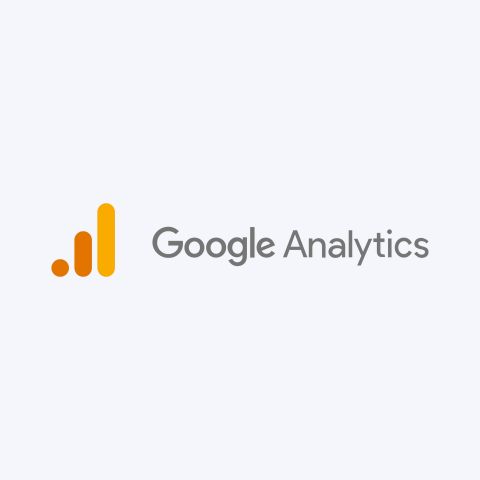
Google Analytics
Best for Web Analytics and Website Performance Tracking
- Integrations150+
- AI-PoweredYes
About Google Analytics
Google Analytics is a powerful tool for businesses that provides detailed performance reports, like ROI analysis. It helps understand how customers interact with websites and apps, making finding the best content easier. It includes a central dashboard with clear summaries and reports.
Using machine learning, Google Analytics identifies trends and patterns in customer behavior, spots high-value users, and highlights content that drives conversions. It creates easy-to-share reports with both summary and detailed views. Additionally, it integrates with other Google tools such as Display & Video 360, AdSense, AdMob, and AdWords to expand marketing efforts.
Google Analytics Features
Provides deeper insights and customizable reports than many other free tools available in the market.
Offers real-time data monitoring and reporting capabilities, allowing businesses to react quickly to changes in user behavior and market trends.
Google Analytics Pros/Cons
Effective e-commerce tracking and analysis
Real-time comprehensive data insights
Offers customizable reporting and dashboards
Requires technical knowledge to utilize all features
Limited customer support options

BigQuery
Best for Data Warehousing and Big Data Analytics
- Integrations50+
- AI-PoweredYes
About BigQuery
BigQuery, a cloud-based data warehouse provided by Google, revolutionizes business data analysis by offering a scalable and cost-effective solution. It frees users from infrastructure management, allowing them to focus on extracting valuable insights using SQL and built-in machine learning tools.
BigQuery’s serverless design ensures efficient scaling, enabling rapid querying of terabytes within seconds and petabytes within minutes.
BigQuery is suitable for organizations dealing with extensive datasets. It integrates data from the Google Cloud Platform and other cloud services easily. Its pricing model is pay-as-you-go, based on query processing and stored data. The first 1 TiB per month is offered for free.
BigQuery Features
AI-powered assistive features, including code assist, visual data prep, and intelligent recommendations for improved productivity and cost optimization.
Integrate with other big data products, such as Hadoop, Spark, and Beam. Data can be directly written from the system into these products.
Offers access management, filter views, and encryption.
BigQueryPros/Cons
Handle large volumes of data and scale up or down based on needs.
Provides real-time data analysis
Easy to use with SQL and provides security and compliance
Data type compatibility issues with visualization tools.
Limited ETL connectors.

Qlik
Best for Data Discovery and Self-Service Analytics
- Integration100+
- AI-PoweredYes
About Qlik
Qlik Sense software helps make better business decisions based on data, making It a self-service analytics solution for everyone. Organizations can explore their data. With drag-and-drop ease, they create attractive visualizations that make them come alive in stunning detail while being easy to change or edit afterward.
Qlik Sense is available in two editions: Business and Enterprise, both offered via annual subscription per account. Enterprises can deploy on a hosted SaaS public cloud, multi-cloud, on-premise, or private cloud. Additionally, Qlik Sense Business includes a free 30-day trial, and a free desktop version is available for personal use.
Qlik Features
Generate powerful analyses through machine learning, predictive analytics, and generative AI.
Get fast answers and perform ad hoc analyses with an AI assistant available in 10 languages.
Supports native integrations with popular technology partners, including Microsoft, Google, Amazon Web Services, Snowflake Salesforce, and SAP.
Qlik Pros/Cons
Leverage AI-powered recommendations and advanced data relationship techniques.
Offers easy-to-use drag-and-drop functionality.
Access quick and insightful analytics with an associative engine and in-memory processing.
It can’t be installed on Linux and Mac OS.
Doesn’t offer powerful reporting functionality.
Qlik Pricing
| Plan | Monthly Pricing | Offering |
| Standard | $825 | Includes data analysis, additional storage purchase, data source integration, visualizations, automated reporting, AI analytics, no-code automation, team collaboration, and 24×7 support. |
| Premium | $2,700 | Includes Standard features plus 100,000 Basic Users, additional data source integration, predictive analytics, enterprise governance |
| Enterprise | Custom | Includes Premium features, flexible data governance, larger data set sizes, enhanced scalability, volume discounts, and personalized onboarding. |

Sisense
Best for Embedded Analytics
- Integrations100+
- AI-PoweredYes
About Sisense
Sisense is a comprehensive data analytics platform enabling data discovery and analytics for customers and employees through an embeddable, scalable architecture. Utilizing in-chip technology on the back end allows analysts to merge large datasets from various sources into a unified database for the entire organization.
Users of all skill levels can create visualizations, reports, and dashboards on the front end to explore and share insights that drive business growth. Sisense’s AI-driven, cloud-native analytics solution, Fusion, integrates into business workspaces, allowing teams to view key metrics and data insights within their everyday tools.
Suitable for businesses of any size, Sisense can be deployed on-premises, as a private cloud-hosted, fully managed, or through a hybrid approach.
Sisense Features
Using a rich library of prebuilt graphics creates diverse visualizations like bar charts, scattergrams, and interactive maps.
Maintains live connections to data, providing real-time monitoring and push notification alerts for KPI changes.
Uses machine learning for proactive KPI monitoring and alerts, automating tasks, and personalizing the BI experience.
Sisense Pros/Cons
Utilize a rich library of visualizations with easy customization options.
Leverage hundreds of built-in connectors for seamless data integration.
Simplify complex data insights with AI-generated narratives.
Analyze data effectively across all skill levels with code-free to code-first tools.
Doesn’t work well with complex and huge data sets.
The UI of the mobile app isn’t user-friendly.
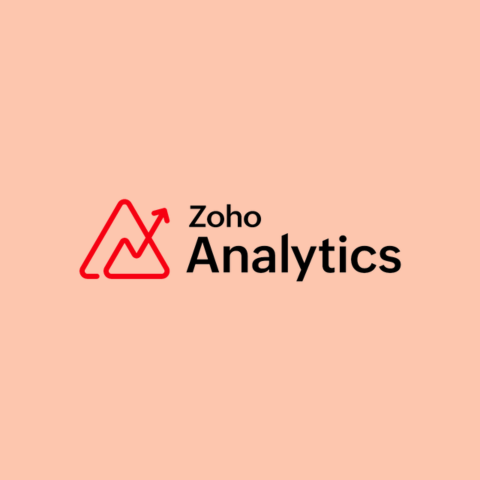
Zoho Analytics
Best for Small Business Analytics and Reporting
- Integrations60+
- AI-PoweredYes
About Zoho Analytics
Zoho Analytics provides a user-friendly, self-service platform for creating visualizations and dashboards. It enables organizations to gain insights and analyze business data on-demand, minimizing the need for IT support or data analysts through extensive automation.
Zoho Analytics can handle large datasets, clean and blend data, and perform various analytical tasks. It allows users to visualize results in dynamic graphics to make informed business decisions.
Zoho Analytics supports stand-alone and embedded environments and is accessible on mobile devices. Deployment is flexible, offering both on-premise and cloud options.
Zoho Analytics connects to various data connectors, including cloud storage, multiple databases, CRM systems, Google Analytics, marketing platforms, social media, financial platforms, e-commerce platforms, HR, and more.
Zoho Analytics Features
An intuitive drag-and-drop interface makes generating useful reports quick and easy without coding.
You can view underlying data, set contextual filters, perform data exploration, and drill down into the data to gain insights.
Schedule reports to be automatically published or emailed and set up regular automated report generation.
Zoho Analytics Pros/Cons
Set alert conditions that trigger automated alerts.
Compare regional performance quickly and easily with interactive map charts.
View reports and dashboards from mobile devices using apps on iOS and Android.
Affordable pricing plans for small businesses
It has a steep learning curve for beginners.
The user interface can be confusing due to its numerous features.
Zoho Analytics Pricing
| Plan | Monthly Pricing | Offering |
|---|---|---|
| Basic | $24 | Reports & Dashboards, Pre-built Reports, 75+ Visualization Options, Data Storytelling |
| Premium | $115 | Advanced-Data Preparation, Unlimited Query Tables, Business App Connectors (50+), Data Snapshots, Formula Engine |
| Enterprise | $455 | All Premium features plus REST APIs for Integration (100,000 units/day), API Units, Custom Roles, Logo Rebranding |

Apache Iceberg
Best for Data Lake Management
- Integrations20+
- AI-PoweredNo
About Apache Iceberg
Iceberg is an open-source table format created by Netflix to overcome various challenges within Apache Hive’s Hadoop project. Developed in 2018, Netflix donated Iceberg to the Apache Software Foundation, making it a fully open-source and community-managed project. It has rapidly gained popularity for its ability to address the limitations of its predecessor.
Apache Iceberg enables big data analysts to efficiently manage and query data in a data lake by creating metadata around files, allowing tools to treat them as tables. This brings the functionalities and capabilities of traditional SQL tables, such as ACID transactions and time travel, to data lakes.
Apache Iceberg Features
It allows you to change how your data is organized so that it can evolve without requiring you to rewrite your queries or rebuild your data structures.
Supports various storage systems and query engines, including Apache Spark, Apache Hive, and Presto. This makes it easy to use Iceberg in various data processing environments.
It offers flexible SQL commands to efficiently perform tasks such as updating rows, merging new data, and targeting deletes.
Apache Iceberg Pros/Cons
Allows for schema evolution without downtime or complex migrations
Supports adding, dropping, renaming, and reordering fields without rewriting data.
Ensures reliable data operations with full ACID compliance.
Fully open-source and managed by a vibrant community.
It may require additional configuration and maintenance compared to other data formats.
The steep learning curve for users unfamiliar with its concepts and features
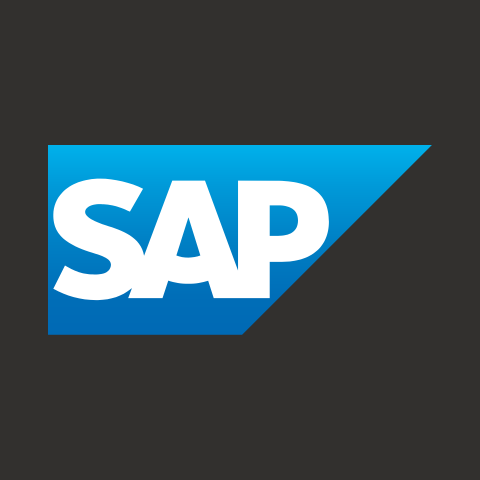
SAP Analytics Cloud
Best for Enterprise-Level Business Intelligence
- Integrations200+
- AI-PoweredYes
About SAP Analytics Cloud
SAP Analytics Cloud, previously called SAP BusinessObjects Cloud, is a SaaS solution that integrates planning and predictive analysis with traditional business intelligence (BI) features. Its up-to-date user interface makes integrated planning, analysis, and prediction possible within a single platform.
SAP Analytics Cloud provides real-time business intelligence capabilities, enabling users to solve complex problems instantly. It supports data blending from various sources, generates detailed visual representations of data, and provides instantaneous ad hoc reports.
The SAP Cloud Platform uses HANA’s in-memory computing for fast and reliable cloud business intelligence while ensuring data security.
SAP Analytics Cloud Features
Connects seamlessly to on-premise and cloud data sources, including SAP BW, SAP Analytics Universes, SAP HANA, SAP S/4HANA, and other non-SAP sources.
Allows users to perform business intelligence tasks directly in a web browser without installing additional software.
Combine planning, predictive analytics, and business intelligence into a single solution.
SAP Analytics Cloud Pros/Cons
Utilize generative AI to automate reporting and uncover hidden insights.
Provides real-time data processing and analysis.
Offers detailed visual data representations and instant ad hoc reports for quick insights.
It can be expensive compared to other BI tools, especially for small businesses.
Users might experience performance lags with very large datasets.

Klipfolio
Best for Real-Time Dashboard Creation and Monitoring
- Integration130+
- AI-PoweredYes
About Klipfolio
Klipfolio is an analytics software designed to help manage data effectively through its dashboards and reports that report on KPIs or oversee trends. Users can access reports from several internal systems in one place and set up interactive visual data display graphs that are easily shared.
Klipfolio is a cloud-based business intelligence dashboard platform connecting multiple data sources to provide real-time, accurate data visualizations. It offers two tools: the classic Klip and the new PowerMetrics. The classic Klip focuses on building real-time dashboards and visual reports, while PowerMetrics is a dedicated metrics platform. Both tools help businesses make data-driven decisions by providing visually represented statistics.
With Klipfolio, you can monitor how your business is doing efficiently, saving Rome that would otherwise be lost to simple continuous data analysis.
Klipfolio Features
Allows users to bring dbt™ Semantic Layer metrics into a catalog, enhancing the depth and usability of their data.
Connects to hundreds of data sources, including on-premise data warehouses, social media sites, and web-based services like Google Analytics, ensuring that the data is always up-to-date.
Klipfolio Pros/Cons
Automate scheduled reporting to save time and ensure stakeholders receive timely updates.
Offers highly customizable dashboards and reports for your team and clients.
Integrates with various data warehouses and SQL servers.
No integration with Python API
Additional cost of data metrics periodic refresh feature over and above the paid plan
Klipfolio Pricing
| Plans | Monthly Pricing | Offering |
|---|---|---|
| Free | Free | Includes 2 dashboards, 1-hour data refresh, Semantic Layer Integrations |
| Professional | $300 | PowerMetrics AI, full reporting automation, logo customization, and single sign-on, Data Warehouse Integrations |

RIB BI+
Best for Data Visualization and Exploration
- Integrations50+
- AI-PoweredYes
About RIB BI+
RIB BI+ is a robust business intelligence (BI) software designed for businesses to analyze, visualize, and share their data within a centralized analytics platform.
RIB BI+ offers an intuitive drag-and-drop interface that allows even nontechnical users to perform advanced analytics and build dynamic and interactive business dashboards to gain valuable insights.
RIB’s BI+ software comprises six main components: Connect, Analyze, Dashboards, Reports, Alarms, and Insights. It allows the integration of various data sources and the easy creation of interactive dashboards, setting data alarms, and generating reports with just a few clicks. The software provides dashboard templates and tutorials for quick and efficient user onboarding.
RIB BI+ Features
Set threshold alarms for metrics and benefit from an advanced alerting system with real-time data monitoring for business KPIs.
Allow creates dashboards with over 80 templates, manage data integrity with different user roles and permissions, and customize dashboard layouts to fit business needs.
RIB BI+ Pros/Cons
Offers user-friendly data visualization experience with a drag-and-drop interface.
Provides advanced predictive analytics and querying capabilities.
No free trial is available.
Pricing may be higher for small businesses or startups with limited budgets.
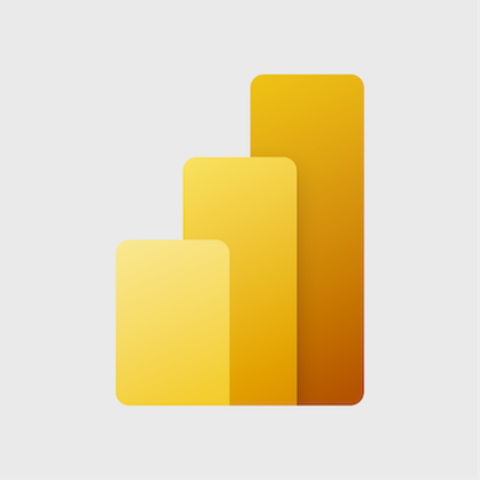
Microsoft Power BI
Best for Data Visualization and BI
- Integrations100+
- AI-PoweredYes
About Power BI
Microsoft Power BI is a comprehensive analytics suite for reporting and data analysis. Its user-friendly interface facilitates data extraction from Excel workbooks, SQL Server, and text and CSV files. It connects to Data feeds, Power BI Template Apps, and semantic models.
Microsoft Power BI is an advanced Excel version with a familiar interface, making it easy for users to adopt. Its tiered pricing structure is suitable for businesses of all sizes, offering a free Desktop version for content creation and Pro and Premium versions for sharing insights.
Integrating Power BI/Data Lake on Microsoft Fabric provides a semantic layer to mitigate data volume and latency issues associated with data import and DirectQuery.
Power BI Features
Supports hundreds of on-premises and cloud-based databases. They include web APIs and JSON and text/CSV files. Plus, it connects to Salesforce, Oracle, and SQL Server.
It uses easy-to-use AI features that can find patterns in data, create reports instantly, provide answers, and more.
Connects to hundreds of data sources, both on-premises and cloud-based, including SQL Server, Salesforce, Oracle, Google BigQuery, and web APIs, providing extensive data integration capabilities.
Power BI Pros/Cons
Supports real-time data monitoring and updates, allowing businesses to make timely, data-driven decisions.
Integrates smoothly with other Microsoft products like Excel, Office 365, Teams, and SharePoint.
Provides end-to-end visibility with Microsoft governance, security, and compliance.
Limited Features are present for the Free account.
Slows down when handling large data volumes and complex tasks.
Microsoft Power BI Pricing
| Plans | Monthly Pricing/User | Offering |
|---|---|---|
| Power BI Pro | $10 | Access to Power BI service features, Collaboration, creating reports and dashboards |
| Power BI Premium | $20 | All pro features, Advanced AI, Advanced dataflow, Advanced datamarts, XMLA endpoint read/write. |
| Power BI Embedded | Custom | Automate monitoring, management, and deployment, All Premium features, Access to Fabric workloads, Copilot in Fabric |
What is Data Analytics Software?
Data analytics software is a tool that lets businesses collect, process, and analyze large volumes of information to obtain insights. It allows businesses to recognize trends, patterns, and anomalies within their data sets and make data-driven decisions.
How do Businesses Benefit from Data Analytics Software?
Data analytics software helps businesses understand their operations, customer behaviors, and market trends. This understanding leads to streamlined service channels, improved customer experiences, and more effective sales strategies to increase efficiencies and competitive advantage.
Is Data Analytics Software Better than Business Intelligence Tools?
Data analytics software is more powerful than business intelligence (BI) tools for complex data analysis and predictive modeling. BI tools are used for reporting and visualization, while data analytics software includes statistical analysis, machine learning, and predictive analytics. Companies often use both types of tools together to understand data comprehensively. For those looking to enhance their decision-making process, exploring the best business intelligence tools is essential.
Can Data Analytics Software and AI Data Analysis Tools be Used Together?
Yes, data analytics software can work with AI data analysis tools to enhance data analysis and processing. AI data analysis tools bring advanced machine learning and artificial intelligence capabilities, enabling new business possibilities. By combining traditional data analytics with AI, businesses can automate complex tasks, gain deeper insights, and produce more accurate predictions and intelligent decision-making solutions.
How do Data Analytics Tools and Predictive Analytics Tools Differ?
Data analytics tools focus on analyzing historical data to identify trends, patterns, correlations, and anomalies within datasets, while predictive analytics tools use statistical algorithms and machine learning to forecast future events and results. Data analytics tools explain what has happened and why, while predictive analytics tools forecast future outcomes, making proactive business decisions essential.
What are the Other Enterprise Software?
Enterprises use various software to streamline operations, improve communication, and enhance productivity. Some popular enterprise software includes:
Salesforce : A comprehensive Customer Relationship Management (CRM) platform.Microsoft Teams : A communication and collaboration tool that integrates with other Microsoft Office applications.Oracle NetSuite : A cloud-based ERP solution that provides financial, CRM, and e-commerce capabilities.- SAP ERP: An enterprise resource planning software that manages business processes across various functions.
- ServiceNow: A platform for IT service management and automating business workflows.
For more information on different types of business software, you can refer to business software types.
-
 EditorNarendra Mohan Mittal is a senior editor & writer at Geekflare. He is an experienced content manager with extensive experience in digital branding strategies.
EditorNarendra Mohan Mittal is a senior editor & writer at Geekflare. He is an experienced content manager with extensive experience in digital branding strategies.


